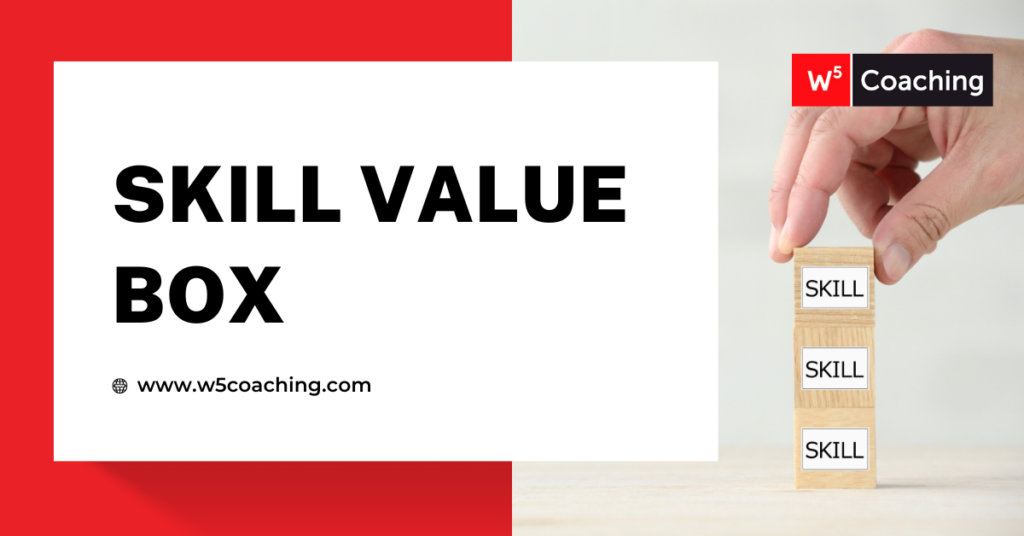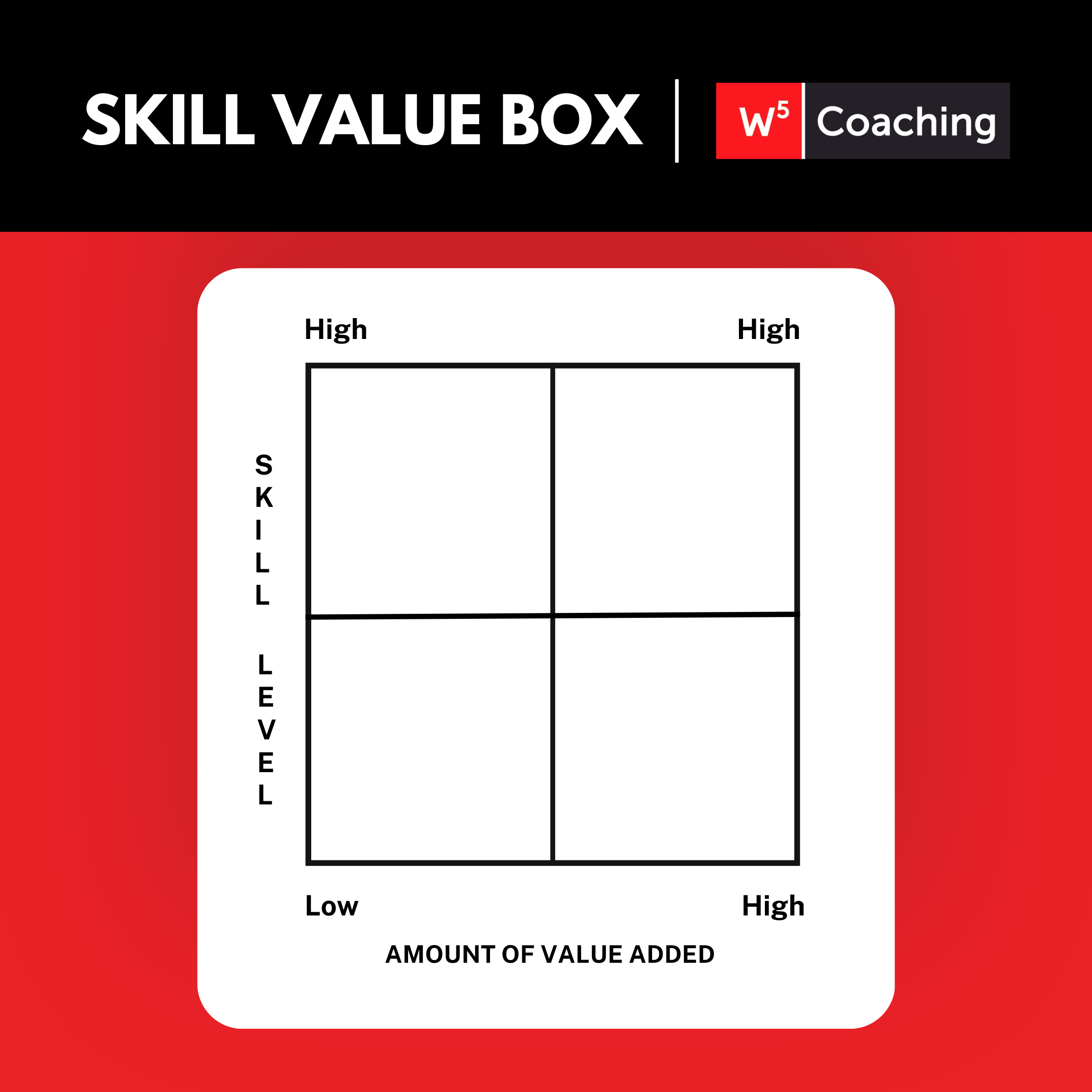How to Save Time and Increase Your Effectiveness with the Skill Value Box

Life isn’t fun when all your time is taken up by your business.
It’s easy to get into that trap.
In the beginning, you put tremendous time and energy into your business to get it off the ground – expecting that you’ll be able to reclaim your life once you get things rolling.
Then once things start moving, you find your time taken up with serving customers, attending to administrative tasks, hiring and training a team – all while continuing to keep the sales and marketing engine going.
My clients often come to me exhausted and burned out. Sometimes it’s a partner who prompts them to get help.
In one case I’ll never forget, my client’s wife told him: “Your business is your mistress. If you don’t do something about it, I will.”
If you find yourself working late days, working on the weekends, never taking a decent vacation – here’s the first thing you need to do to gain time freedom.
Figure out where you add value to your business with the skill/value box
As tempting as it might feel, you can’t get the time freedom you’re looking for by walking off the job and abandoning your business.
Instead, you need to be selective about what YOU need to continue to do – and what you can outsource or even eliminate.
The best way to figure this out is by completing the skill/value box exercise.
Begin by auditing your time for a week.
Use a simple spreadsheet to capture everything you do in 15-minute increments. (Just by recording your activity, you may have moments where you ask yourself: “should I really be doing this?”)
Once you have a log of your activity, categorize everything you do by placing it into the correct quadrant of the skill/value box:

Skill refers to the level of proficiency and expertise that you possess in a particular area.
Value added refers to the impact that skill has on the overall success and profitability of your business.
By plotting these two factors on a grid, you can gain insights into your strengths and weaknesses and manage your time to maximize value and impact.
High Skill + High Value
This is where you should be spending the most time.
These are things that you are good at and that add value to your business.
For example, I spend most of my time either coaching clients or meeting with prospective clients.
These are the highest value activities in my business – and I’m skilled at both of them.
Related: How much is your time worth?
Low Skill + Low Value
These are the things you should stop doing immediately.
You’re not good at them…and they don’t add value.
You may be able to eliminate these tasks entirely.
If they still need to be done, outsource them.
You can probably find an assistant on upwork who will happily do this work for $20/hour (or even less.)
High Skill + Low Value
These will be things you’ll be reluctant to give up.
You’re good at them. You probably enjoy doing them. But they don’t add (enough) value to the business.
For example, a retail store owner who is highly skilled in accounting may not be adding significant value to the business if they are spending too much time on bookkeeping rather than on sales and marketing.
In order to become a more successful business owner, you’ll need to shift the time you are spending on low value tasks so that you can focus on creating more value.
Low Skill + High Value
This is the growth zone.
Activities in this area are important and valuable to the business, but you don’t (currently) have the skill or expertise necessary.
If you don’t have anything listed here, you either have a highly successful business and lots of time freedom – or you’re avoiding some critical things that you’re not skilled at.
For many owners, these neglected areas include sales, leadership and management, delegation, and planning.
Next steps: take this information and use it to build a better business
Here’s a simple 3-step plan:
- Continue doing the things in the High Skill/High Value quadrant.
- Eliminate or Delegate everything in the Low Value quadrants (even if you’re good at it and like doing it!)
- Use the time you freed up in step 2 to get better at the things in the Low Skill/High Value quadrant.
Step 3 is what the E-Myth refers to as “working ON your business instead of IN it.”
The fastest and most effective way to do this is to work with a business coach.
If you’re ready to quit playing a game of whack-a-mole with your time and your calendar: completing tasks one after another and never feeling like you’re getting anywhere, I invite you to book 15 minutes on my calendar to discuss coaching.
I guarantee it will be time well spent.

Get Your Time Back
How to escape overwhelm and gain time freedom in your business
Get control of your email and calendar
Prioritize your most important tasks
Become more productive than you ever thought possible
Ready to free up 5-7 hours per week? Download this guide today! Enter your details below to receive your free copy!
